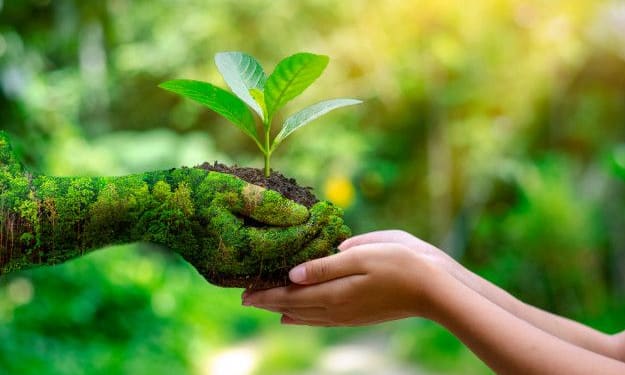How Saving the Oceans Starts at Home
Local, Seasonal, Sustainable

It is quite common that when we’re made to think about sustainability and pollution, our attention is misdirected to minor factors to distract us from the more pertinent issues. The plastic straw debacle for instance is a good example of this. Getting people to stop using single use plastic straws was an easy way to convince people that they were making a positive impact when the reality is that that straws are only one of hundreds of single use plastic items that we use everyday which damage our oceans and the sea life within in. To have made that action meaningful people should have asked how they could rid themselves of all single plastics in their lives, not just straws.
This leads into my policy for reducing my carbon footprint and minimising my impact on the oceans and wild habitats. Local. Seasonal. Sustainable. In this article I’ll explain why enacting on each of these policies will effectively reduce my environmental impact in a way that doesn’t feel compromising to my lifestyle but which does have a meaningful effect beyond self-gratification.
Local – We live in a reality where it’s a standard expectation that we can consume any product from anywhere on the planet and it shouldn’t have to cost anything. Whether we’re describing perishables like food or consumer goods like clothing and electronics we have established a huge shipping and commerce network around the globe that is contributing to a large percentage of carbon emissions as well as other polluting factors. Every year 11bn tons of goods get put on cargo ships to be transported to foreign consumers, that’s 1.5 tons per person! Some argue shipping is a more environmental way of moving goods then air freight however it still causes 3% of all carbon emissions and more importantly misses the point which is that it’s totally unnecessary to consume so many products from overseas!
A steak from Brazil might be cheaper than a home grown one but the environmental cost is astronomically higher. Buying locally reduces the need for shipping which doesn’t only reduce carbon emissions but also removes cargo ships from our waters reducing other forms of damage to our oceans such as waste dumping and collisions with sealife. This isn’t to say everything you consume must come from a local source, sometimes that’s impossible. Rather, it’s about asking the question when you go to buy something of whether it’s possible to find a locally sourced version of it somewhere else. This is usually possible with meat and fish, clothing and toiletries, and common plant based products like pasta and bread.
Seasonal – Is it necessary to eat strawberries in December? Strawberries do not grow naturally in December and yet we still expect to see them in stores all year round. What does it mean? Either, it means the fruit has been grown abroad in a warmer climate, you can see why that’s a problem above, or it means special energy intensive farming methods have been used to grow it. Growing a tomato in a wintery climate requires using a heated greenhouse, additional fertilisers in the soil and more often then not irrigation. The end product will still be less tasty and nutritious then one grown naturally in season.
Learning to eat seasonally does mean learning to go without some fresh fruit and veg at certain times of year but will also give you the opportunity to learn about all the in season alternatives which are equally delicious and will create excitement for when produce does come in season. It’s important to note seasonality also applies to fishing practises. Many fish species have a life cycle and movement patterns that correspond to the time of year. For instance, wild salmon is only in season from February to October so eating salmon in December probably means it’s either farmed or has been sourced unsustainably. Consuming seasonally goes hand in hand with consuming locally and doing both together is an effective way to reduce our carbon footprint and reclaim our understanding of how things are sourced so we can be confident no unnecessary environmental damage is involved in the process.
Sustainable – Sustainable might seem like a broad term but it embodies a way of thinking about consumption that when put into practise can have a profound effect on our environmental impact. For instance, one word synonymous with sustainability is longevity. When you go to a buy something, perishables withstanding, ask the question how long will this product serve me for? And then ask, is there an alternative product that will serve me longer? If the product is single use, like a straw, plastic bag or, in light of the pandemic, a surgical facemask, the answer is probably yes. All can be replaced very easily with a product that will last longer meaning a smaller carbon footprint and less waste in our oceans.
This rule doesn’t only apply to single use plastics though, the same question can be applied to clothing. We live in a society of fast fashion, where clothes are cheap, usually produced overseas and don’t last longer than a single season. Not only does clothing cause issues for the reasons described in the local section but they also create a lot of unnecessary waste. The average consumer throws away 32kg of clothing every year which is completely unsustainable. There are two great solutions to this problem. Buying a single item of clothing that’s well made and sustainably produced that will last a long time is more economically efficient then buying many items of clothing that don’t last, even if the item is more expensive. If that still isn’t good enough, buying second hand clothes means your net carbon footprint is zero and your clothes are actually cheaper overall. The beauty of it is you can return the clothes to the thrift store when you no longer want them for someone else to use. Clothing and single use plastics are only two examples of goods we consume everyday that we can apply questions of sustainability. The point is not how we treat single objects but rather the mindset we inhabit when we go about our daily lives.
None of the changes I’ve discussed in this article are particularly life changing and will not infringe on the pleasure you derive from the world, however, when put all together they will drastically reduce the damaging impact you as a consumer have on the environment and may also increase your appreciation for the things that you do have access to. Investing in little changes now will have big results in the future.
About the Creator
Marianna Felfoldi
An open minded, highly motivated, hardworking, safety conscious, polite and caring person.






Comments
There are no comments for this story
Be the first to respond and start the conversation.